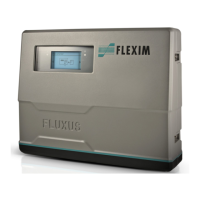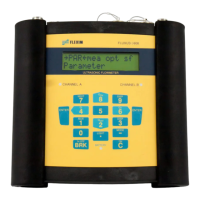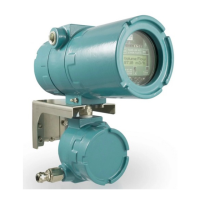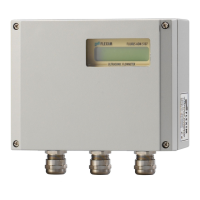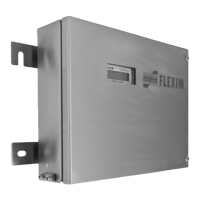FLUXUS F808, F809 6 Installation of FLUXUS F808
34 UMFLUXUS_F808_8091V1-2-1EN, 2019-08-23
6.5.4 Connection of the extension cable to the junction box
6.5.4.1 Without potential separation (standard)
The connection of an extension cables to a junction box without potential separation ensures that transducer, junction box
and transmitter are on the same potential. The extension cable should always be connected that way especially if power
cables are laid near the extension cable.
See section 6.5.4.2 if earthing on the same potential cannot be ensured.
• Remove the blind plug for the connection of the extension cable (see Fig. 6.11).
• Open the cable gland of the extension cable. The compression part remains in the cap nut.
• Push the extension cable through the cap nut and the compression part.
• Prepare the extension cable.
• Cut the external shield and brush it back over the compression part.
• Tighten the gasket ring side of the basic part into the junction box.
• Insert the extension cable into the junction box.
• Fix the cable gland by screwing the cap nut onto the basic part.
• Connect the extension cable to the terminals of the transmitter (see Fig. 6.11 and Tab. 6.6).
Attention! Observe the "Safety instructions for the use in explosive atmospheres" (see document SIFLUXUS).
Attention! For good high frequency shielding, it is important to ensure good electrical contact between the exter-
nal shield and the cap nut (and thus to the junction box).
Fig. 6.11: Connection of the extension cable to the junction box
V
V S
R S
R
T V
T V S
T G
T
G
T R S
T R
100 mm
20 mm
10 mm
extension cable
extension cable transducer cable
cap nut
compression part
basic part
cable gland
external shield,
brushed back
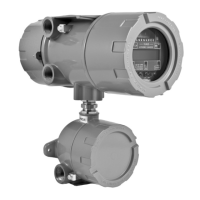
